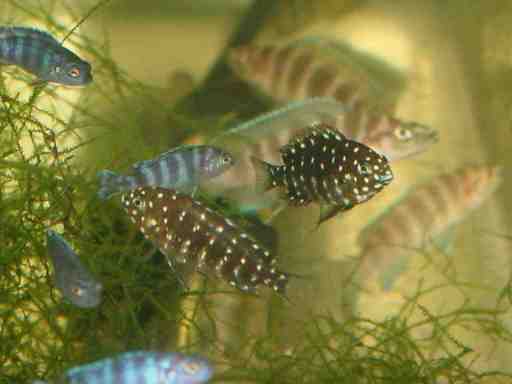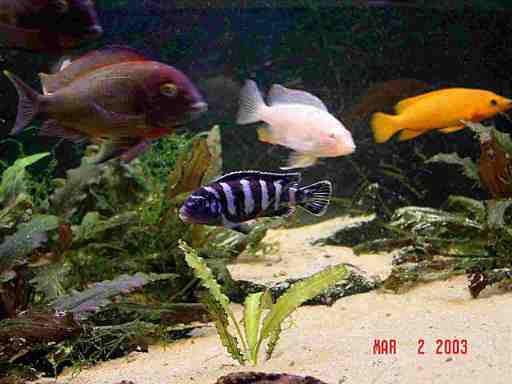

As with most of you, we began with hardy Malawian genus such as: Pseudotropheus, Melanochromis, Iodotropheus, Labidochromis (all found within the "Mixed Malawian Tanks") or even the Aulonocara and Scaienochromis (usually found in a separate tank labeled "peacocks" and "electric blues"). These are all priced nicely for beginners moving away from guppies, tetras and barbs (Don't get me wrong, these fish can make a magnificent display and some of which are extremely difficult to work with). However as time moved on, we found that the number of our tanks increased proportionally with our experience and before we knew it, we found ourselves moving into more challenging species. Only now can we shed light on what we have learned and also make available the progeny of our breeding fish.
Unlike wholesalers who mass-produce fish in huge numbers, as hobbyist, we have a small selection of fish for sale or trade at any one given time. We are usually limited to breeding pairs or small colonies of individuals and our ultimate goal is to recreate an environment where multiple species are living and breeding within a single community tank. Unfortunately, as we all know some species don't mix, especially if they occupy the same ecological niche. For example, not only do Neolamprologus buescheri and Julidochromis marlieri look alike due to the convergent evolution of two completely different genus, their similarities would put them in direct competition with each other if they were to ever encounter one another. Luckily this does not occur in the wild since they occupy different locations, separated by physical and spatial barriers. So, within the following pages, you will find some helpful hints, which will hopefully prevent any minor ecological disaster, such as genocide, from occurring within your private ecosystems. Hmm, I just don't think that frontosa/leptosoma mix you were dreaming about will work, unless you have an indoor swimming pool and plan on having a predator/prey population study.

